#coloniality and nature
Explore tagged Tumblr posts
Text
This is moreover complicated by the fact that the [South African] apartheid state did not acknowledge itself as engaged in a war. The apartheid state in the late 1970s saw itself as engaged in a ‘total onslaught’, preferring to refer to its ‘enemy’ as terrorists rather than declaring an outright war. According to Cock and Nathan, the choice for the apartheid state to define the conflict as unrest or terrorism as opposed to war implied that liberation movement fighters were denied the prisoner of war status granted by the Geneva Protocols to those engaged in war against colonial powers.
— Women combatants and the liberation movements in South Africa (2015) by Siphokazi Magadla
its refreshing to see this so plainly laid out in writing. a terrorist is just someone the state has decided has no rights
#book club#the author is grappling with this through the construction of 'veteran' and how that label is harder to apply to anti-apartheid fighters#due to a lack of distinction between civilian/military and the combined internal + international nature of decolonial resistance#+ the policy problems this creates in post-colonial states with combatant reintegration. anyway interesting text so far
3K notes
·
View notes
Text
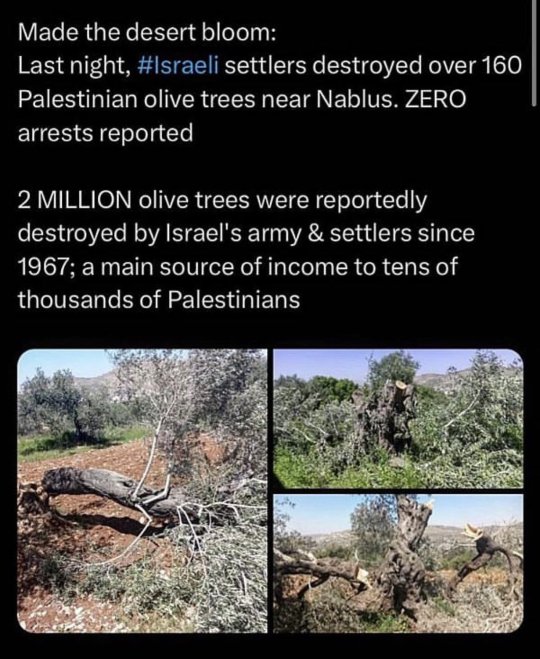
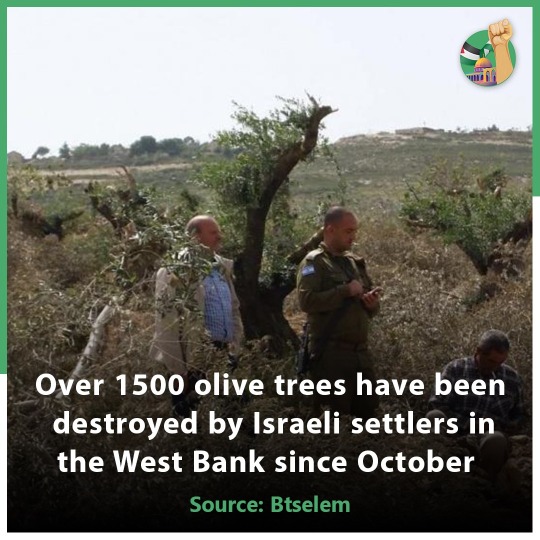

US literally is a teaching guide for war crimes.
#free palestine#politics#news#palestine#west bank#democrats#republicans#trees#botany#nature#native americans#military#woc#poc#women of color#colonialism#colonization#usa
9K notes
·
View notes
Text
Legislation passed last year allows federally recognized tribes to practice cultural burning freely once they reach an agreement with the California Natural Resources Agency and local air quality officials.
Northern California’s Karuk Tribe, the second largest in California, becomes the first tribe to reach such an agreement.
(Feb. 27, 2025, Noah Haggerty)
Northern California’s Karuk Tribe has for more than a century faced significant restrictions on cultural burning — the setting of intentional fires for both ceremonial and practical purposes, such as reducing brush to limit the risk of wildfires.
That changed this week, thanks to legislation championed by the tribe and passed by the state last year that allows federally recognized tribes in California to burn freely once they reach agreements with the California Natural Resources Agency and local air quality officials.
The tribe announced Thursday that it was the first to reach such an agreement with the agency.
“Karuk has been a national thought leader on cultural fire,” said Geneva E.B. Thompson, Natural Resources’ deputy secretary for tribal affairs. “So, it makes sense that they would be a natural first partner in this space because they have a really clear mission and core commitment to get this work done.”
In the past, cultural burn practitioners first needed to get a burn permit from the California Department of Forestry and Fire Protection, a department within the Natural Resources Agency, and a smoke permit from the local air district.
The law passed in September 2024, SB 310, allows the state government to, respectfully, “get out of the way” of tribes practicing cultural burns, said Thompson.
For the Karuk Tribe, Cal Fire will no longer hold regulatory or oversight authority over the burns and will instead act as a partner and consultant. The previous arrangement, tribal leaders say, essentially amounted to one nation telling another nation what to do on its land — a violation of sovereignty. Now, collaboration can happen through a proper government-to-government relationship.
The Karuk Tribe estimates that, conservatively, its more than 120 villages would complete at least 7,000 burns each year before contact with European settlers. Some may have been as small as an individual pine tree or patch of tanoak trees. Other burns may have spanned dozens of acres.
“When it comes to that ability to get out there and do frequent burning to basically survive as an indigenous community,” said Bill Tripp, director for the Karuk Tribe Natural Resource Department, “one: you don’t have major wildfire threats because everything around you is burned regularly. Two: Most of the plants and animals that we depend on in the ecosystem are actually fire-dependent species.”
The Karuk Tribe’s ancestral territory extends along much of the Klamath River in what is now the Klamath National Forest, where its members have fished for salmon, hunted for deer and collected tanoak acorns for food for thousands of years. The tribe, whose language is distinct from that of all other California tribes, is currently the second largest in the state, having more than 3,600 members.
Trees of life
Early European explorers of California consistently described open, park-like woods dominated by oaks in areas where the forest transitions to a zone mainly of conifers such as pines, fir and cedar.

The park-like woodlands were no accident. For thousands of years, Indigenous people have tended these woods. Oaks are regarded as a “tree of life” because of their many uses. Their acorns provide a nutritious food for people and animals.
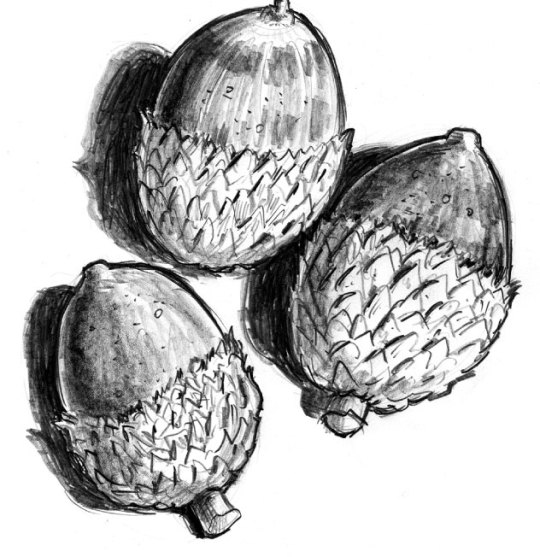
Indigenous people have used low-intensity fires to clear litter and underbrush and to nurture the oaks as productive orchards. Burning controls insects and promotes growth of culturally important plants and fungi among the oaks.

Debris, brush and small trees consumed by low-intensity fire.
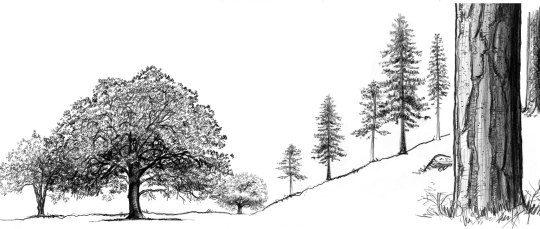
The history of the government’s suppression of cultural burning is long and violent. In 1850, California passed a law that inflicted any fines or punishments a court found “proper” on cultural burn practitioners.
In a 1918 letter to a forest supervisor, a district ranger in the Klamath National Forest — in the Karuk Tribe’s homeland — suggested that to stifle cultural burns, “the only sure way is to kill them off, every time you catch one sneaking around in the brush like a coyote, take a shot at him.”
For Thompson, the new law is a step toward righting those wrongs.
“I think SB 310 is part of that broader effort to correct those older laws that have caused harm, and really think through: How do we respect and support tribal sovereignty, respect and support traditional ecological knowledge, but also meet the climate and wildfire resiliency goals that we have as a state?” she said.
The devastating 2020 fire year triggered a flurry of fire-related laws that aimed to increase the use of intentional fire on the landscape, including — for the first time — cultural burns.
The laws granted cultural burns exemptions from the state’s environmental impact review process and created liability protections and funds for use in the rare event that an intentional burn grows out of control.
“The generous interpretation of it is recognizing cultural burn practitioner knowledge,” said Becca Lucas Thomas, an ethnic studies lecturer at Cal Poly and cultural burn practitioner with the yak titʸu titʸu yak tiłhini Northern Chumash Tribe of San Luis Obispo County and Region. “In trying to get more fire on the ground for wildfire prevention, it’s important that we make sure that we have practitioners who are actually able to practice.”
The new law, aimed at forming government-to-government relationships with Native tribes, can only allow federally recognized tribes to enter these new agreements. However, Thompson said it will not stop the agency from forming strong relationships with unrecognized tribes and respecting their sovereignty.
“Cal Fire has provided a lot of technical assistance and resources and support for those non-federally recognized tribes to implement these burns,” said Thompson, “and we are all in and fully committed to continuing that work in partnership with the non-federally-recognized tribes.”
Cal Fire has helped Lucas Thomas navigate the state’s imposed burn permit process to the point that she can now comfortably navigate the system on her own, and she said Cal Fire handles the tribe’s smoke permits. Last year, the tribe completed its first four cultural burns in over 150 years.
“Cal Fire, their unit here, has been truly invested in the relationship and has really dedicated their resources to supporting us,” said Lucas Thomas, ”with their stated intention of, ‘we want you guys to be able to burn whenever you want, and you just give us a call and let us know what’s going on.’”
#good news#environmentalism#traditional ecological knowledge#cultural burns#prescribed burns#california#fire#science#environment#nature#animals#usa#indigenous people#Karuk Tribe#indigenous conservation#conservation#indigenous peoples#indigenous history#colonialism#decolonisation#decolonization#long post#intentional burns#climate change#climate crisis
304 notes
·
View notes
Text
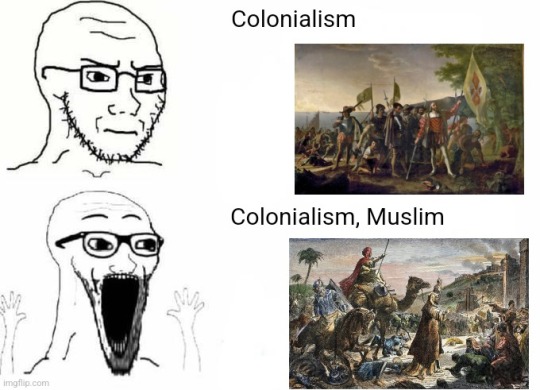
#following the recent bullshit in kashmir as well as the previous year and a half's bullshit#christianity is the white people religion and islam is the brown people religion. it's that simple guys it was always like this.#i still think about what fdelopera said about western leftists viewing islam as the “natural state of brown people”#that just stuck in my head#i don't want to hear anything about the middle east from someone who doesn't know what the fuck a druze or a bedouin is#muslims arab aren't the default for the middle east. islamist extremists are just working very hard to convince the world that they are.#and it's working. they're counting on the ignorance of the average tiktok leftist to distort history and it's working.#arab colonialism#arab colonization#hila has spoken
332 notes
·
View notes
Text
if usamericans are excited about the concept of anti-colonialism in other countries oooh boy do i have some exciting news for you...you can practice decolonization right here at home!
#cupid.txt#im very glad we're anti colonialism dont get me wrong and solidarity with all indigenous peoples suffering under colonialism#but i sometimes wonder if kids-and others who just dont know about history i guess- know that their passion can#be used where they live as well#like we're still in a colonized country we're still living with the history of genocide and mass cultural upheaval#if you read anything about how the land and peoples here were treated during colonial times--it was apocalyptic in nature#please care about the history of the land you live on
326 notes
·
View notes
Text
“The job is the unquestioned goal for all free citizens of the world – the ultimate public good. It is the clearly stated exit goal of all education and the only sanctioned reason for acquiring knowledge. But if we think about it for a moment, jobs are not what we want. We want shelter, food, strong relationships, a livable habitat, stimulating learning activity, and time to perform valued tasks in which we excel. I don’t know of many jobs that will allow access to more than two or three of those things at a time, unless you have a particularly benevolent owner or employer.
I am often told that I should be grateful for the progress that Western civilization has brought to these shores. I am not. This life of work-or-die is not an improvement on preinvasion living, which involved only a few hours of work a day for shelter and sustenance, performing tasks that people do now for leisure activities on their yearly vacations: fishing, collecting plants, hunting, camping, and so forth. The rest of the day was for fun, strengthening relationships, ritual and ceremony, cultural expression, intellectual pursuits, and the expert crafting of exceptional objects. I know this is true because I have lived like this, even in this era where the land is only a pale shadow of the abundance that once was. We have been lied to about the “harsh survival” lifestyles of the past. There was nothing harsh about it. If it was so harsh – such a brutish, menial struggle for existence – then we would not have evolved to become the delicate, intelligent creatures that we are.”
- Tyson Yunkaporta, Sand Talk: How Indigenous Thinking Can Save The World
#sand talk#tyson yunkaporta#sand talk: how indigenous thinking can save the world#capitalism#we live in capitalism: its power seems inescapable. so did the divine right of kings#history#sustainability#solarpunk#nature#indigenous authors#books#antiwork#anti capitalism#indigenous rights#colonialism
316 notes
·
View notes
Text

Pond Island Light, Kennebec River, Phippsburg, Maine. Until 1937, Pond Island hosted a colony of terns, but the growing gull population forced them to clear out. In 1960, when the light became automated, all the buildings, except the tower were removed. In '73 Care of the island was transferred from the Coast Guard to Fish and Wildlife to be re-established as a tern colony. Thanks to the help of National Audubon, tern decoys and calls were deployed, gull nests removed, and finally in '99 the first common tern chick in over 60 years hatched. Then in 2003, Pond Island recorded its first successful breeding pair of endangered roseate terns.
#Pond Island Light#Kennebec River#Phippsburg#Maine#illustration#jada fitch#art#bird#drawing#design#nature#Pond Island#lighthouse#maine lighthouse#Fish and Wildlife#Fish and Wildlife Service#National Audubon#tern colony#island#maine island#roseate tern#terns#tern#Sterna dougallii#maine artist#illustrator#artist#lighthouse art
58 notes
·
View notes
Text

A colony of walruses pop up from the icy waters of the Arctic Ocean in Svalbard, Norway
Photograph: Michael Oliver/Animal News Agency
#michael oliver#photographer#animal news agency#walrus#arctic ocean#svalbard#norway#animal#mammal#wildlife#nature#colony of walruses
38 notes
·
View notes
Text
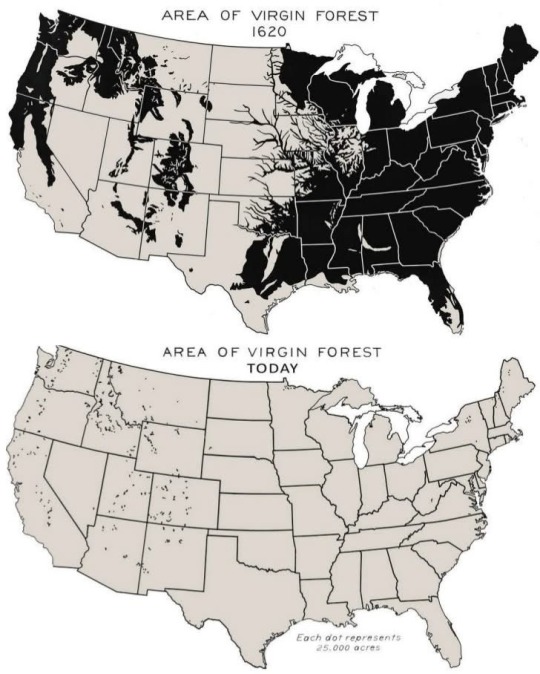
#maps#deforestation#nature#north america#colonialism#history#u.s. history#usa#forests#ecology#conservation#environment
64 notes
·
View notes
Text
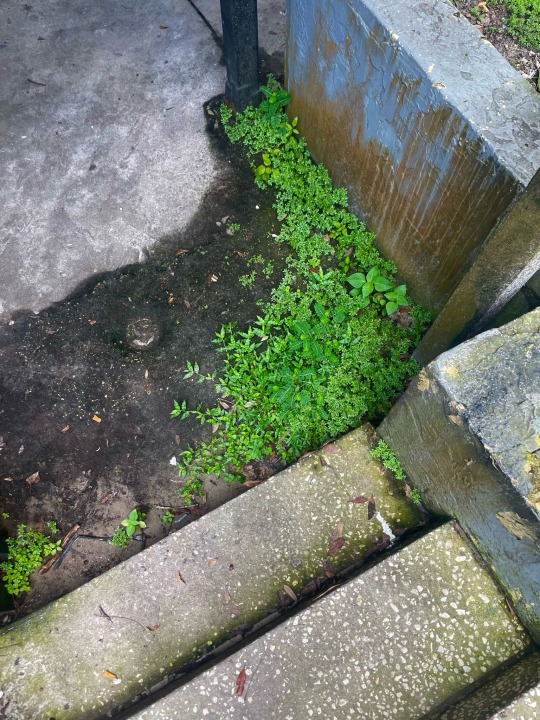
a mini forest found on my commute
111 notes
·
View notes
Text
listen. hear me out. shadow not being able to talk properly and just mispronouncing/mumbling EVERYTHING when gerald first created them. i'm talking toddler/infant speaking level despite being like. above six years old when they first came out of that tube.
the adults who didn't like shadow using this as an excuse to ignore whatever the hedgehog has to say under the pretense of 'not being able to understand them', and not listening when shadow says they're hungry or that an experiment hurts.
maria teaching shadow how to speak and pronounce things right - it takes them a while, but eventually, shadow is the most well-spoken being on that ARK.
the adults hating maria for this because now they actually have to listen to what shadow has to say now because they can longer dismiss them due to them being unintelligible. they actually have to listen when shadow says 'that hurts!' or 'i want professor robotnik.' or 'i need water.'
and if they don't - well, shadow tells everything to maria, and maria brings up every little issue regarding shadow up to gerald, the lead scientist, who does everything to make sure maria is happy - which means making sure shadow is happy.
#sth#sonic the hedgehog#sth fandom#sonic the hedgehog fandom#sonic#sonic fandom#shadow#shadow the hedgehog#maria robotnik#ark siblings#gerald robotnik#space colony ark#the ark#young shadow#young shadow the hedgehog#implied abuse#sort of? im tagging it just in case#cw implied abuse#i think that ignoring a childs needs/wants just because you dont like them and blaming it on their speech counts as some form of abuse#anyway yeah shadow wasnt really a favourite amongst the adults on the ark#thankfully their intimidating nature + marias overprotectiveness usually made them back off#but it was ROUGH for shadow ehen they were a kid because they were blind and oblivious and scared and yeah.#theres only so much maria can do#anyway#littlr bit of angst for you#angst#in a way?#enjoy the burnt cake <3#ill characters <3
143 notes
·
View notes
Text
Today, one of the leading cable news hosts just asked the French justice minister about reopening penal colonies in French Guyane and New Caledonia. Today, as the USA announced a deal that would see El Salvador become a penal colony. Later that day, Trump, next to genocidaire Netanyahu, announced his plan to turn Gaza into a U.S. protectorate. Italy is sending its unwanted migrants to Albania. Russia is using shock troops from Siberia and North Korea and causing government crises all across the Caucasus. The U.K. had plans to send its migrants to Rwanda and paid good money to do so. Rwanda's Kagame is using Western money and arms to wage a genocidal war on Congo. The EAU are the ones fueling death in Sudan. The BJP is doing mass ethnic cleansings and massacres based on religious and ethnic criteria. To say nothing of the blight that is Israel.
This is fascism, yes, but it's also the resurgence of Victorian Era politics. Colonialism, "spheres of influence" geopolitics, protectionism and trade wars. This tells us this about our enemy: their politics were defeated at every single turn. This is not about the arc of the moral universe bending towards us, this is about the enemy being spectacularly weak and exposing itself to ruin. The past century is a record of those defeats. Yes, the enemy is resurgent, but it has learned nothing, and we have 150 years of learning accessible to us.
These are grim times. Yet the past victories of the oppressed peoples of the earth tell us it is not only possible to defeat our enemy, it is the safest bet you're ever going to make in this lifetime.
#I keep coming back to Timor Leste#outnumbered 100 million to one#ultimately securing its independence and freedom#To South Africa; funded by the west; with nukes; guns; natural resources up to here; high GDP; living in semi-autarky#to Algeria; where they refused compromises and half-measures in the face of bloody repression and won it all#to Vietnam; 30 years of war; against France; the US & the assorted west; against China itself#to Armenia; still standing strong even though il y a péril en la demeure#and to Palestine. 75; 100 years even; of constant oppression by a colonial state; staring down the barrel of genocide#and yet their will and their nation has yet to be broken; despite being cleaved apart they remain one proud people#the colonial state is destined to lose because it is a whining and undignified thing that makes itself hateable#and exposes its weakness everywhere it tries to build#Destroy what you can of its tentacles
43 notes
·
View notes
Text
illithid having higher emotional needs than most beings but when outside of a colony often will not admit the need to fill them in alternative ways, my beloved weird quirk to fall into.
#renegades are rare for one. and likely /also/ don't document for others much.#and colonies would keep the emotional and social needs fulfilled as a natural part of living in one#so they don't quite /notice/ some needs are there until without.#(they are in fact a hyper social species. individuals do not often see it that way.)
47 notes
·
View notes
Text

They regularly ask me to let them in the other's enclosure so they can cuddle. When Sakura thought I was pestering her sister she put herself between me and her; incredibly brave of her as she is still afraid of human hands (but much better than she use to be.)
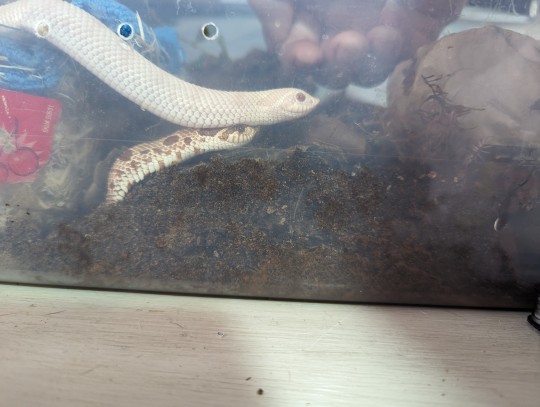
When Sakura gets frightened she'll run to her sister and often hide her head under her.

Both enjoy exploring and doing their enrichment activities together. Seeing this on a daily basis, and the bond these little ones have with each other (and me) I think more research needs to be done regarding the current belief Hognose snakes are incapable of emotion or bonding, and are completely solitary. While both go to their individual dens after socializing, both seek each other out and cuddle together. (They are only allowed together while I'm there watching as sometimes snakes will eat each other, and they seem to enjoy having their own home space when it isn't play/cuddle time.) Sakura benefits so much being with her sister, just being near her she's exponentially braver and far less jumpy, and will watch her sister with great interest learning from her.
#snake#snakes#snake social lives#hognose#pets#I genuinely think our current understanding of them is wrong just like it is with the leopard gecko#leos have been believed to be solitary for ages#only recently was it understood they live in COLONIES#Just because a critter likes to have their own little house doesn't mean they don't have friends or enjoy socialization#I also need to make a post about petting#as I have a theory with evidence that supports some snakes enjoy petting and it being a natural behavior within some of their societies
109 notes
·
View notes
Text

Philadelphia Old City / from the archives.
© Lía Serrano
.
#Lia Serrano#artists on tumblr#visual arts#photographers on tumblr#original photographers#photo art#philadelphia#philly#travels#travel photography#old architecture#architecture#colonial architecture#dark and moody#nature photography#moody aesthetic#winter#visual art#digital photography#artwork#pennsylvania
66 notes
·
View notes
Text
also I know I’m strolling in seven years late to Horizon’s representation problems but I feel like these games are an instructive example in how the liberal imagination understands “good representation.” the game seems to take a lot of care in demonstrating (what the developers understand to be) a fully post-racial society by way of universal racial integration - every society or ‘tribe’ or group of people you encounter is almost uniformly racially diverse. Being generous, I think this is an attempt to avoid any possible racist implications in the fanciful costumes and outfits that Horizon is known for; there is a lot of focus in representing the different people of Horizon’s world through what they wear. You can immediately tell an Oseram from a Carja, not by their racial makeup, but by their clothing. This means that, if you meet a particularly ‘savage people’ (a term characters in the game use semi-frequently) who wear ‘exotic clothing’ and face-paint, the diverse racial makeup of the group prevents (or is intended to prevent) a racist conclusion about that group.
Likewise, the game presents a world free from systemic homophobic prejudice - Aloy is notably gay, but also her asking people about their partners, or assuming other people around her are gay, generally passes without comment. Horizon is presenting a fully ‘integrated’ social world, one whose conflicts are not meant to map onto ‘modern-day’ racism and homophobia.
But the underlying logic and structure of racism and homophobia (and binaristic, oppositional gender) are left intact. Humanity in Horizon is still presented as fundamentally separate from nature, moving overtop of it, extracting what they need from it, but never part of it as such. And this construction of nature as separate from “man” is not problematised, “man” just gets universalised into “human,” and “human” gets universalised into a non-racial category. This is completely side-stepping the history of this construction of nature as a white supremacist, colonial, capitalist construction, an understanding of nature as something colonial Europe is meant to hold dominion over through the dehumanisation of non-white, non-European people, converting them into non-human labourers and pests who live atop the land Europe is attempting to colonise and enclose. “Nature” in the modern western understanding is a fundamentally racial concept; nature is a ‘scientific, rational, biological’ container meant to house everything non-human about the world, an object to be studied and exploited by the one true subject of history, Mankind - and who is considered part of mankind is a question of whether you belong to the white European ruling class.
I think Aloy in particular represents this problem well - her access to and understanding of pre-apocalypse technology makes her universally suspicious and dismissive of any religious or ‘spiritual’ beliefs she encounters in other groups, frequently getting into reddit-atheist-adjacent quibbles with the ‘unenlightened,’ ‘primitive’ people of the world about the fact that the machines that harvest food for them and take care of the land are not gods, silly, they’re just machines! Her only real counterpart in terms of technological understanding is Sylens (a Black man), who is an antagonist. Like despite the game’s attempts at neutralising race as a coherent category, it is kind of unavoidable to notice that the protagonist is a white woman who’s only equal is a Black man engaging in constant deception for his own benefit lol
And Aloy’s anti-religious sentiments are deeply funny, because the game’s narrative itself has a theological relationship to technology - humans destroyed the world with technology, yes, but salvation of humanity is only possible through technology, specifically a globe-spanning technological system meant to be an environmental steward to the planet, repairing the damage caused by previous technological catastrophes and human wars. Human beings themselves are insufficient to the task of taking care of the planet, and “nature” itself is incapable of self-governance or regulation. And the way this technological system is made to function properly again is, hilariously, unlocked through the genetic code of a white woman, a perfect clone of the technological system’s original creator. the solution to Horizon’s central conflict and threat is, ultimately, a white saviour
And so the appropriative elements of Horizon - calling the Nora ‘braves,’ the abstracting of hundreds of north american Indigenous cultures into mere aesthetics and symbols, the invocation of words like savage and primitive, and so on - are not surface-level problematic elements of an otherwise anti-racist game, they are indicative of a liberal anti-racist imaginary, a place where we’re all equal human beings whose main problem are vague sectarian grudges, without looking at or dealing with any of the underlying ideological frameworks that produced race or gender in the first place.
So I think Horizon is, despite attempts to imagine a post-racist world, nonetheless very limited in how it represents this post-racial world because it understands racism as prejudice against particular phenotypic characteristics, not an underlying logic that renders “nature” and “human” as fundamentally racial concepts in history
#um. idk what to tag this#also what’s the consensus on citing sources for tumblr posts. I’m using Quijano and Lugones’ work on coloniality of power & gender if you#want to read more about the colonial history of nature#I should probably just post excerpts of those works instead#horizon
206 notes
·
View notes